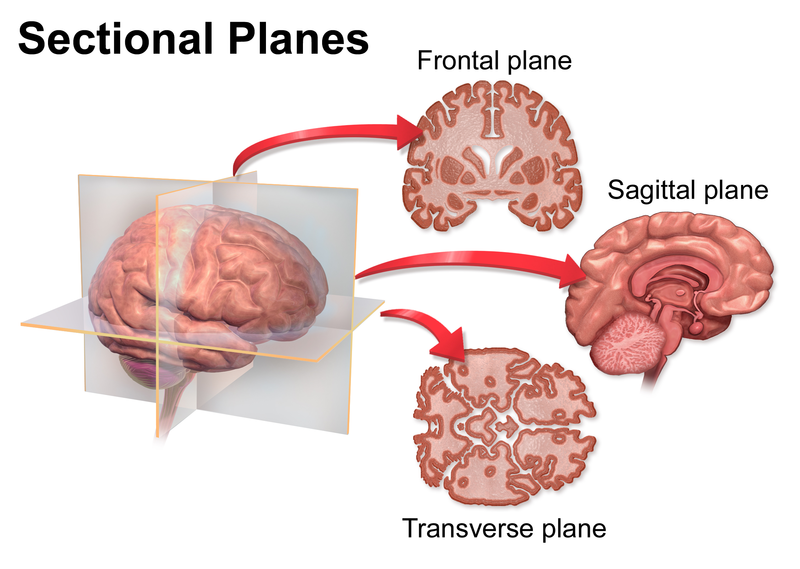2.2: Visualizing and Navigating the Human Brain
Before diving into nervous system organization, we present some important anatomical terms for visualizing and navigating the brain. The brain is a three-dimensional (3-D) structure that can be visualized in two-dimensional (2-D) slices. There are three standard anatomical planes for visualizing the brain: 1) the coronal or frontal plane; 2) the sagittal plane; and 3) the horizontal or axial plane (Figure 1). The coronal or frontal plane is a vertical plane and splits the brain into front and back sections. The sagittal plane is a vertical plane which splits the brain into left and right sections. The horizontal or axial plane is a horizontal plane which splits the brain into upper and lower sections.

Conventional terms describe locations and directions in the brain and are helpful for navigating around the brain.
- Anterior means toward the front of the brain; Posterior means toward the back of the brain.
- Rostral means toward the front or the “beak”; Caudal means toward the tail end.
- Superior means toward the top; Inferior means toward the bottom.
- Dorsal means toward the top or back (think dorsal fin); Ventral means toward the belly.
- Medial means toward the middle; Lateral toward the side.
- Contralateral means on the opposite (left/right) side; Ipsilateral means on the same side.
You’ll hear these terms a lot as you learn about the brain.
Media Attributions
- Slices of the human brain © Wikimedia is licensed under a CC BY-NC-SA (Attribution NonCommercial ShareAlike) license

